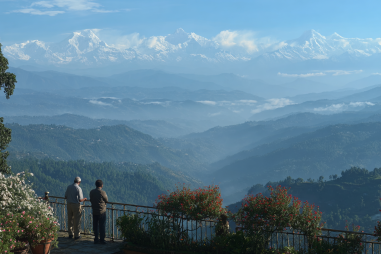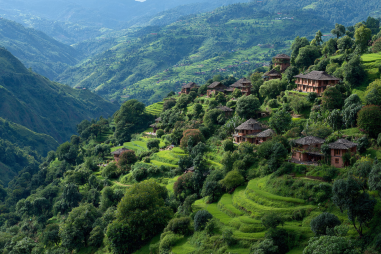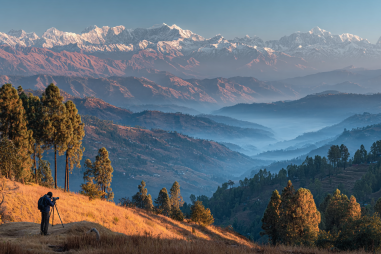Nestled in the heart of the Himalayas, Lukla Airport serves as a vital gateway for trekkers heading toward the legendary Everest region. Known for its challenging terrain, high altitude, and unpredictable weather, Lukla’s airport flight schedules are unlike those of typical commercial airports. Understanding these unique flight timings and the factors that influence them is crucial for anyone planning a trip to this remote part of Nepal. Whether you are an adventure-seeker eager to start your trek or a cautious traveler wanting to avoid last-minute hassles, this guide will help you navigate Lukla Airport’s flight operations, manage expectations around delays, and make your journey as smooth as possible.
Overview of Lukla Flight Operations
Lukla Airport, officially known as Tenzing-Hillary Airport, sits at an elevation of approximately 2,860 meters (9,383 feet). It is famous for having one of the shortest and most dangerous runways in the world — a mere 527 meters (1,729 feet) long, perched on a hillside surrounded by towering mountains. Flights primarily connect Lukla with Kathmandu, the capital of Nepal, and this route is the main aerial corridor for tourists and supplies heading to the Everest Base Camp and surrounding trekking areas.
The airport mainly handles small STOL (Short Takeoff and Landing) aircraft capable of maneuvering in tight spaces and at high altitudes. Operations are primarily conducted in the early morning hours when weather conditions are generally more stable. The high altitude and unpredictable mountain weather impose heavy constraints on flight scheduling, making Lukla one of the most weather-dependent airports in the world.
Typical Daily Flight Schedules
Flights at Lukla Airport operate on a fairly tight schedule, usually starting early in the morning. Most flights between Kathmandu and Lukla begin departing as early as 6:00 AM and continue intermittently until around 10:00 or 11:00 AM. After mid-morning, flights are generally suspended for the day, primarily because the weather tends to become unstable with afternoon clouds, wind, and fog, which can severely impact flight safety.
Most airlines conducting flights to and from Lukla schedule their departures in the early hours to take advantage of the relatively calm morning atmosphere. This means if you are flying into Lukla, you will likely leave Kathmandu very early and, conversely, if returning from Lukla, flights often start around the same early hours. It’s uncommon to have flights scheduled in the afternoon or evening due to the increased risk of poor visibility and challenging winds later in the day.
Because there are multiple small airlines operating on this route, it is common to see several flights in the early morning hours from different carriers, but all with tight windows for takeoffs and landings.
Seasonal Variations in Flight Availability
Flight schedules to and from Lukla Airport also fluctuate with the seasons. Nepal’s trekking seasons – pre-monsoon (spring) from March to May and post-monsoon (autumn) from September to November – are the busiest periods. During these times, flight demand increases significantly, and airlines tend to add more flights, often at peak early morning slots, to accommodate the influx of trekkers.
In the winter months (December through February), flight frequency decreases due to colder temperatures and the potential for snow at Lukla. Meanwhile, the monsoon season (June to August) is characterized by frequent rain and low clouds, leading to numerous flight cancellations and limited flight availability. Many travelers avoid flying to Lukla during the monsoon and opt for alternative approaches to the Everest region or choose other trekking destinations.
The narrow window of flying time and the volatile weather mean airlines may sometimes adjust or cancel flights based on daily forecasts, especially in the off-peak seasons.
Weather Impact and Cancellations
Weather is the biggest factor influencing Lukla Airport flight schedules. Lukla’s mountainous location subjects it to rapid and often severe weather changes. Fog, heavy rain, strong winds, and low visibility are common challenges.
Because Lukla’s runway is short and situated in a steep valley, pilots require excellent weather conditions to safely take off and land. An airport closure due to poor weather can happen at any time, not just seasonally. When weather deteriorates, flights are canceled or delayed — sometimes for several days — forcing travelers to remain in Lukla or Kathmandu until conditions improve.
It’s important for travelers to maintain flexible itineraries and plan buffer days around their flights to account for potential weather-related disruptions. Booking flights early in the morning maximizes your chances of flying, as afternoon weather is typically less predictable.
Tips for Booking Lukla Flights
Booking flights to Lukla requires some special considerations:
- Book Early: During peak trekking seasons, flights fill up quickly. Reserve your seats weeks or months in advance to secure your flight times.
- Choose Early Mornings: Opt for the first flights of the day to increase your chances of flying before weather issues arise.
- Flexible Tickets: Select flexible or refundable fare options if possible since cancellations are frequent.
- Use Reputable Airlines: Stick with airlines experienced in mountain flights for safer and more reliable service.
- Travel Insurance: Always purchase comprehensive travel insurance covering cancellations, delays, and medical evacuations in mountainous terrain.
- Stay Updated: Monitor weather forecasts and airline communications closely for last-minute schedule changes.
What to Do During Delays
Flight delays and cancellations at Lukla are common, especially during unfavorable weather. Here’s how to handle these situations:
- Stay Calm and Patient: Weather-related delays are beyond your control, and rushing can add stress and risk.
- Connect with Airlines: Keep in touch with your airline’s office in Lukla or Kathmandu for the latest updates and rebooking assistance.
- Accommodation Planning: Have prior arrangements for accommodation in Kathmandu or Lukla, as you may be stranded for additional days.
- Stay Informed: Listen to local airport announcements and check reliable weather apps or websites.
- Keep Essentials Handy: Bring extra food, water, and warm clothing, especially if stranded in Lukla, where facilities can be limited.
Alternative Travel Methods
If flights are canceled or if you prefer a more adventurous option, several alternative methods to reach or leave the Lukla area exist:
- Trekking from Jiri or Salleri: Historically, before flights, trekkers would begin their journey from Jiri or Salleri, towns accessible by road. Though more time-consuming (a 7-10 days trek), this route offers rich cultural experiences and scenic landscapes.
- Helicopter Services: Helicopter charters operate between Kathmandu and Lukla, offering a faster but more expensive option. These flights can be more flexible and sometimes operate longer in the day depending on weather.
- Connecting via Other Mountain Airstrips: Occasionally, flights may route through alternative airstrips like Phaplu or Ramechhap if Lukla is inaccessible. However, these options are generally for specialized travelers or cargo.
These alternatives can be a good backup plan or part of a broader itinerary but generally require more time and money compared to scheduled flights.
Planning Smart for Lukla Flights
Flying to Lukla remains a thrilling experience but requires careful planning and awareness of the unique factors governing flight schedules and operations. Always give yourself ample time buffers, stay informed about weather developments, and prepare for possible delays. With the right approach, a flight to Lukla offers breathtaking views and kickstarts one of the world’s most iconic trekking adventures.







